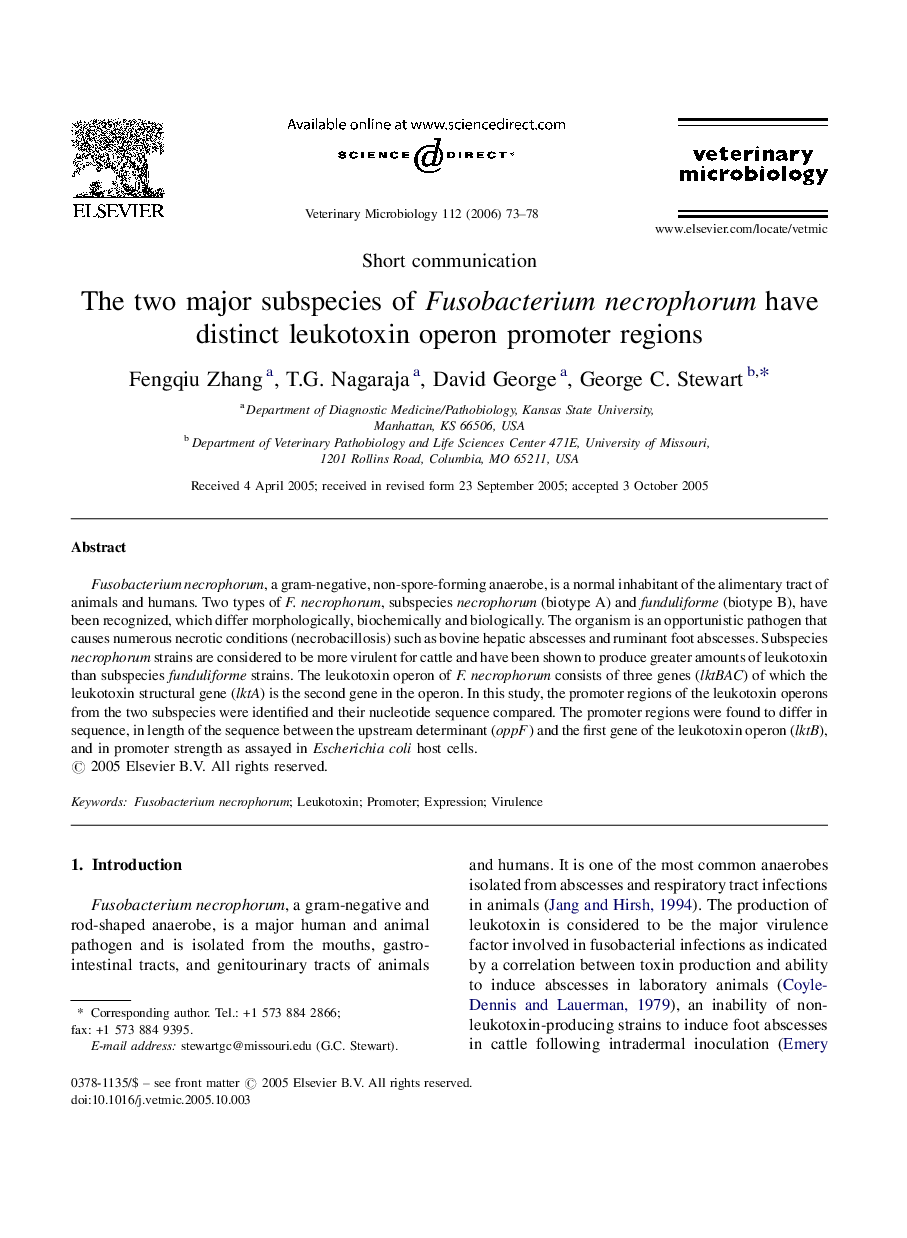| Article ID | Journal | Published Year | Pages | File Type |
|---|---|---|---|---|
| 2469761 | Veterinary Microbiology | 2006 | 6 Pages |
Fusobacterium necrophorum, a gram-negative, non-spore-forming anaerobe, is a normal inhabitant of the alimentary tract of animals and humans. Two types of F. necrophorum, subspecies necrophorum (biotype A) and funduliforme (biotype B), have been recognized, which differ morphologically, biochemically and biologically. The organism is an opportunistic pathogen that causes numerous necrotic conditions (necrobacillosis) such as bovine hepatic abscesses and ruminant foot abscesses. Subspecies necrophorum strains are considered to be more virulent for cattle and have been shown to produce greater amounts of leukotoxin than subspecies funduliforme strains. The leukotoxin operon of F. necrophorum consists of three genes (lktBAC) of which the leukotoxin structural gene (lktA) is the second gene in the operon. In this study, the promoter regions of the leukotoxin operons from the two subspecies were identified and their nucleotide sequence compared. The promoter regions were found to differ in sequence, in length of the sequence between the upstream determinant (oppF) and the first gene of the leukotoxin operon (lktB), and in promoter strength as assayed in Escherichia coli host cells.
